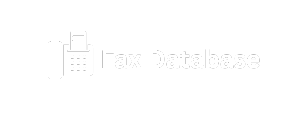The URL, or slug, of your page is another important factor in turkey telegram data SEO.A well-optimized slug helps both search engines and users understand the content of the page before even clicking on it .Search engines look at the slug to determine how relevant the page is to a search query, so having an SEO-friendly slug can improve your chances of ranking higher. To create an optimized slug, keep it:
- Short and Descriptive: Aim for a concise slug that clearly reflects the content of the post. Long, complex URLs can be confusing for users and may get cut off in search results.
- Include the Target Keyword: Be sure to include your main keyword in the slug to make it clear what the page is about and improve its relevance for SEO.
- Use Hyphens, Not Underscores: Separate words with hyphens (e.g., “seo-copywriting-checklist”) as Google prefers this over underscores.
Have You Used Heading Tags?
Heading tags (H1, H2, H3, etc.) help structure your content, simple and effective google ad making it easier for search engines to understand the main topics of your post and allowing readers to easily scan through the content.
Properly using heading tags improves readability, organizes your ideas, and enhances your chances of ranking for relevant keywords.Hierarchy of Heading Tags:
- H1: The H1 tag is for the main title of your page. It tells search engines and users what the entire page is about.
- H2: These are for the primary subheadings that introduce key sections of your content. Think of H2 tags as the main topics or categories within the post.
- H3: These are for sub-points under your H2 sections. They provide further structure and detail to the content within each
Have You Added SEO-Optimized Images?
Images play an important role in making your content more antigua and barbuda business directory engaging and visually appealing, which enhances user experience and keeps readers on your page longer. But beyond just adding visual interest, images can also contribute to your SEO efforts—if optimized correctly. When you add well-optimized images, it not only helps your content rank higher but also increases the chances of your images appearing in Google Image search results, bringing in more traffic.
Here’s how to optimize your images for SEO:
- Use Descriptive File Names: Before uploading an image, give it a file name that describes the content of the image and includes relevant keywords (e.g., “seo-copywriting-checklist.png”). This helps search engines understand the image’s relevance.
